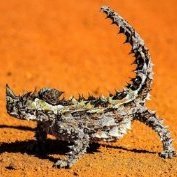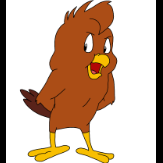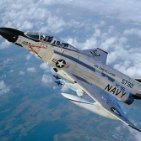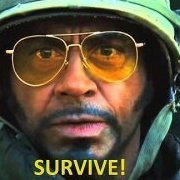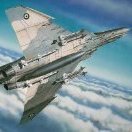Leaderboard
Popular Content
Showing content with the highest reputation on 11/20/2020 in Posts
-
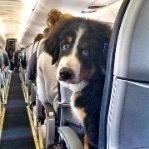
HH-60G Pavehawk Kitty Hawk 1/35 DONE!!
Greg W and 13 others reacted to Pete Fleischmann for a topic
Got the transparencies unmasked. phew. I was really worried about overspray getting in behind the transparencies from those big open cabin doors and gunners windows- I plugged them with foam...but you never know. about to start the dust application- and the Crew Chief got his head back- cheers, Pete14 points -
“It was a brooding machine; thirty tons of it. Even counting motors and turrets as one and excluding nuts, bolts and rivets there were fifty-five thousand separate parts. Over three miles of electrical wiring, generators enough to light a hotel, hydraulics enough to lift a bridge, radio powerful enough to talk to a town on the far side of Europe, fuel capacity enough to take it to such a town, and bomb-load enough to destroy it.” — Bomber: Events Relating to the Last Flight of an RAF Bomber Over Germany on the Night of June 31st, 1943 by Len Deighton My uncle Ivan died flying a Lancaster for the RCAF, so I am putting all my other builds (too many) on hold. Family comes first, so this will be a tribute build to him. I don't know what aircraft or squadron he flew with, so I've selected a late war lanc: "Sugar's Blues" KB864 NA-S of 428 Ghost Squadron, RCAF. I'm using this kit: Starting with the cockpit, I'm addressing some of the inaccuracies that have been noted: Seat Pan +4.5mm too long Seat pan height +1.5mm too high Plus floor is 2.5mm too high Armour plate -3mm too short Pedestal height should be 15 mm high The front edge of the seat is in the correct position relative to the IP, so the shortening of the seat pan will pull the seat back forward toward the IP. Starting with the seat, I used as many of the kit parts as possible, cutting 4.5mm from the front and 1.5mm from the bottom. I made a new seat pan, and shortened and reattached the base pieces: As you can see, I also scratchbuilt and folded back the head armor. I hope you enjoy the build, and please share any advice and encouragement you can! Cheers, Tom11 points
-
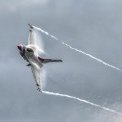
Ukrainian Mania - The digital ‘Flanker’ - time to call it done, I think.
Greg W and 8 others reacted to Stokey Pete for a topic
Progress is painfully slow at the moment. Trying to juggle the care of a 2.5yr old whirlwind, keeping my home working wife in a supply of tea and coffee, my own part time job, and trying to make sure I do my daily exercise for ‘Project get aerobatic flight fit’, is robbing me of bench time at the moment. A rare occurrence happened however. I managed to complete something. I’ve finished the not so small task of the ‘Alamo’ missiles. Zactomans offerings are absolutely exquisite in their detail and quality. I’ve coupled that with the decals from Begemot (beware, there’s a whole lot of ‘em), that took forever to apply. There’s things I could improve on if I weren’t mounting them, like a few minor mould lines running down the top/rear of the missile bodies. They’ll be hidden by the pylons so why make more work for myself huh? The nose cones are probably the wrong colour too but there’s so many variations among the photo’s I looked at that I just decided that “it looks nice like that, I think I’ll keep that colour”. The decals haven’t sat down as well as I’d have liked, despite several doses of micro sol. I tried a bit of pre-shading and different colour base layers to create a bit of interest in the predominantly white finish. ....and here they are. Next....the ‘Archer’ missiles. Yay, even more tiny fins and PE parts.9 points -
Oh my goodness, I can't possibly accept or live up to such praise , those are the kindest comments I have ever read. The thought of any comparison with my modelling heroes is really beyond my comprehension - I just try my best and set myself high standards on your behalf thank you - it is the fuel of my motivation.. so, as I said last time, I started to detail the sidewalls in which there are many bits & bobs that mainly are mini models in their own right.. starting with the R/H wall - here we have a conduit housing on the far left, a big brass ki-gas pump, a sort of pull handle on the top rail and a couple of push switches... ..on the L/H wall a trim wheel made from laminates of 0.5mm ply, some big ratchet handle and a small lever quadrant on the top rail - there is another one on the far side of the rail not shown.. ..and again, it's a matter of constant dry fitting in the jig to make sure everything can co-habit with everything else.. I have to say though, I am really enjoying this build and have started to prepare for the bigger questions it will ask of me - things like vac forming the basic fuselage off a basswood master and looking at the best way to construct the wings following the Alcorn / Lee book anyways, until next time.. TTFN Peter9 points
-
Revell/ AIMS Mistel S3C Wk Nr 460066 Bernburg 1945
Brett M and 8 others reacted to monthebiff for a topic
So the most difficult part of the nose conversion for me is the huge vac canopy, after careful cutting initial test fit is very good. Also looking at getting the fuselage extension fitted, I see lots of rescribing coming up on the fuselage when the nose and tail section finally come together. Fuselage conversion starting to come together now! Regards. Andy9 points -

1/32 Revell Me 262B-1/U1 Nachtjager
Paul in Napier and 7 others reacted to Thunnus for a topic
Thanks for the input guys! Very helpful and interesting information! I haven't had much modeling time the past few days. The few hours I've spent on the Nachtjager have been spent looking at the cockpit components, referencing both the kit and Eduard PE instructions and trying to get subassemblies together prior to painting and determine which PE parts to use. For example, I've decided to glue some subassemblies like the pilot side panels together so that I can, at some point, dry-fit the cockpit components together. There are PE faces for the seats side frames but I doubt that they will be seen from above so I am planning on not using the PE parts. I'll make a more informed decision once I know how the seats fit within the cockpit. One PE component that I think will be superior to the kit part is the Revi 16 gun sight. It's no bigger than the size of a matchhead and yet it is made up of six separate parts... should be a fun assembly exercise. A PE bending tool is helpful when bending PE, especially if you want to get crisp/straight folds. I have a couple but The Bug by Small Shops is the one that I end up using most often. Once the initial folding is done, the box shape of gun sight is closed into final shape using my fingers and tweezers. CA glue along the closed joints seals the box shut. I used a small stiff paint brush moistened with Great Planes Pro CA Debonder to "scrub" away the excess CA glue. A visual reminder of how small this thing is. I thought it would be a good idea to mount the Revi gun sight onto the mounting arm to make it easier to handle and less likely to lose. The final bits are added to the gun sight assembly. The gun sight is primed with Mr Primer Surfacer 1000. Sometimes a mix and match approach will be used. The kit radar assembly has better raised detail than the flat PE box but the PE frame is a big improvement over the kit part. So I'll be using the kit radar mounted on the PE frame. That's all for now!8 points -
This is Dayglo Models 1/32nd scale FIAT G-91. It is a limited production resin kit. I have o say it went together very easily for a resin kit. The kit only comes with Luftwaffe markings, but Dayglo do a set of Italian markings. The only aftermarket I used was some Airscale decals in the cockpit Painted with Xtracolor enamels. Thanks for looking Angelo8 points
-
Ok all little more progress. And a confession. This isn't turning out as well as I had hoped. The farther along I get the more the mistakes begin to pile up. Lets just say that I want to finish this and go on to my next project. But the wheels are on. Here are the gear doors. And last the canopies. Dan8 points
-

SH Tempest Mk V "Kicked Up A Notch". January 14/21 New eBook!
Greg W and 6 others reacted to chuck540z3 for a topic
Thanks. I'd give you some of this blue fabric Tim, but I got mine with a small photo-booth that I use all the time below. I've got a larger photo-booth with the same fabric for larger models and final pics, so it must be common somewhere. I'd try a professional camera store or fabric store. Cheers, Chuck7 points -
RAF FG.1 XV571 WILD HARE Phantom Conversion
Chris Wimmer and 4 others reacted to Anthony in NZ for a topic
OK, just posting this in case I forget to tell you all later. This was a 'gotcha' for me. You probably already knew this anyway, but the 2 access panels on the RWR antenna are only on the left side! I just repositioned and rescribed them on the other side to match the left and realized they are only on one side...Ugh, filled with CA now. Right...back to it5 points -
Couldn't resist a quick trial fit! A little trimming, and I'm going to take off the SW moulded markers, this is where their thicker windshields would have interfaced with the fuselage.5 points
-
Thanks Guy, and sorry Brian, they're not for sale! I'll send you some free, gratis and for nothing.....but sell? Nah, sorry! I added to the design slightly this morning, small tabs which hopefully will help with keeping them in place: and with a new blade in the cutter (the previous one has lasted 6 years, so not bad!): The clear panels are simply the front framework but outline only, also cut on the Silhouette. And painted and looking OK! Some tidying up to do tomorrow when all is dried:5 points
-
Thanks guys. Taking a little licence. The boy is due at 10 am tomorrow.5 points
-

SH Tempest Mk V "Kicked Up A Notch". January 14/21 New eBook!
Victor K2 and 4 others reacted to chuck540z3 for a topic
I think I'm happy with the minimal exhaust staining effect, for a couple of reasons: 1. Exhaust staining is often overdone. I don't want to be that guy 2. I'm trying to replicate the pic of PC standing on the wing of this aircraft which I've shown many times above, and I don't see any obvious staining past the cockpit area onto the code lettering. Tough to determine on this old pic, but it also has brand new paint on the Cross of Lorraine and the 3 Squadron badge, so maybe it was cleaned up a bit? 3. Scale. As the exhaust staining dissipates aft of the engine area, it obviously is less visible. Most of the time I am looking at this model from about 1 foot away, so I want to show what I could see from 32 feet away from the real deal. 4. Randomness of any staining. I looked at a lot of pictures other than the ones shown above and found some similarities, but lots of differences too, so I went with the core of what is most common on both sides. For whatever reason, some had almost no staining (cleaning?), like the pic below. Paint looks pretty new too, so it likely is fairly new. Cheers, Chuck5 points -

HH-60G Pavehawk Kitty Hawk 1/35 DONE!!
Greg W and 4 others reacted to Pete Fleischmann for a topic
Started the weathering base layer. this is a Payne’s Grey oil wash thinned with white spirits. I intentionally shot the base color a little lighter knowing that this wash would really darken up the base paint- much more to do- cheers for now- P5 points -

SH Tempest Mk V "Kicked Up A Notch". January 14/21 New eBook!
Victor K2 and 4 others reacted to chuck540z3 for a topic
November 18/20 Short Update- as I play around with weathering, including the exhaust and propeller. Here are some pics of Pierre Clostermann’s Tempest and one other I stole from the ‘net. Note how the exhaust pattern is not behind the exhausts, but in an arc pattern above them due to airflow, then swinging down just under the bottom of the kill score sheet. It’s fairly dark too. And here's a good pic of the front of the propeller, showing wear and chipping on the gloss black spinner. So I tried to do something similar, and while I was at it, I spent an hour going over all the paint work with my airbrush, delicately spraying both light and dark highlights, similar to the Spitfire pics I’ve shown above. I think it looks a lot better now. Here’s a quick walkaround of just about everything. I also re-painted the bottom, but I’ll show that some other time after I have attached the landing gear. While you can see the chipping on the spinner, the prop blades didn't photograph very well, so you'll just have to take my word for it, that they are weathered as well. Lot's of subtle weathering here and there to come, like the exhaust stacks and the gun barrels. Cheers, Chuck5 points -
This one is finally finished. It was a really good learning experience with plenty of firsts for me. The kit is overall really nice with some exceptions. In general the fit is good and would build up into a nice model from the box but we modelers have a hard time leaving well enough alone. The weakest spots I see are the kit intakes, canopies and engines. This one has an Aires cockpit set, GT intakes, Eduard Brassen engines and weapons, AOA decals and probably a couple of things I'm forgetting. Most of the painting is done with MRP and oils for weathering. This is by far the biggest modeling project I have taken on and it gives me confidence to tackle other big projects. I had a bunch of help from many people on the forum who I thank very much.4 points
-
4 points
-
I completed it on day 3. I missed a day.4 points
-
New, Incredible, Beautiful Tamiya Release Coming Soon; Anyone Know What it is?
Panzerwomble and 3 others reacted to Dave Williams for a topic
Oh great, let’s start another multi page Tamiya wishlist thread. It’s been what, a couple of weeks since we had the last one? Nothing at all indicating that it’s even an aircraft, much less 1/32 scale, but why let that stop anyone. Let’s start the rampant uninformed speculation! It will be a 1/32 F-86 Sabre in a special Godzilla tribute boxing.4 points -
Revell Focke Wulf Fw 190 S-8
Greg W and 3 others reacted to Chris Wimmer for a topic
Well then... back to start with the seats!4 points -
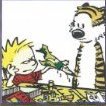
1/24 F6F-5 Hellcat--In Flight
AlbertD and 3 others reacted to easixpedro for a topic
The attention to detail by airfix when designing this kit continues to impress! Check out the mechanism for the flaps. They're labeled port and starboard...! I'm about ready to close up the wings. Have a bit of finagling to do. The fit of the parts is so tight, they even show you where to sand. Everything fits so well, its readily apparent when you've goofed. Patience is key (not my strong suit). I'm fighting a bit of a gap around the .50s, so that means my earlier construction was a bit off...nothing a bit of sanding wont fix, and totally my fault. Also took me forever to figure out what the clear parts atop the wing are. Of course Bill Reese had the answer in his oft quoted and excellent write up about a/c interior colors. They're blue formation lights. Most photos, especially B&W ones, you can't even see 'em. I'd never noticed them, but Airfix caught it and they're there. More soon -Peter4 points -
Thanks Alan! This is the first kit that I've run across that has this combination of finely-printed instrument decals on a clear background with a nicely-molded instrument panel. Zoukei Mura came close but they put the instruments on a solid color background, which makes it (a) difficult to align and (b) decal film with ink is stiffer and harder to conform than clear film. And I thought the molding on the kit instrument panel was not fine enough so I opted for the PE alternative on my Ta 152H build. Hasegawa also prints their instrument decals on a solid color background. And they make the decal option even less viable by providing raised details within each instrument.4 points
-
Taking a few measurements: to base my drawing on: and ready to cut, just 7mm high: and for Silhouette users, the cutting details for 10 thou plastic sheet: The end result looks promising, it's worth just running a sharp point around the cut line to ease getting the frames out: The one standing up was the prototype which is why it's a bit wonky on one side!! Just a coat of yellow and some glazing now....4 points
-

UH-1C Huey Gunship
Loach Driver and 2 others reacted to ShelbyGT500 for a topic
Hi friends, this my next finished project - Huey from Academy at 1/35 scale. For this project I used a lot of photo-etched and resin sets and parts. Painted with tamiya acrilic paints, weathered with oils, washes and dry brush - nothing new for us Put the girl-pilot next to "the choppa" just for fun Hope you will like it And as always thank you for watching and cheers guys3 points -
.thumb.jpg.5da8bff9741de420eb2e87addd8f2cf6.jpg)
New, Incredible, Beautiful Tamiya Release Coming Soon; Anyone Know What it is?
Rick Griewski and 2 others reacted to RadBaron for a topic
It SEEMS that way, buuuuuuut:3 points -
Wingnut Wings Gotha - How Much?
Archimedes and 2 others reacted to esarmstrong for a topic
Last year I picked up a WNW LVG VI at an estate sale for a dollar. Ignorance can really be expensive.3 points -
.thumb.jpg.5da8bff9741de420eb2e87addd8f2cf6.jpg)
Wingnut Wings Gotha - How Much?
Archimedes and 2 others reacted to RadBaron for a topic
I cant help but think the Gotha, in particular, is one of those kits that is such an enormous and daunting project that the vast majority of them will only ever be shuffled between people like this. Each new 'caretaker' will as a bit more aftermarket, then pass it on to the next person. Each seeing its value not as a kit, but an object of "limited" release whos value is only to those who see it in the same light as anything more than nicely shaped chunks of plastic. I imagine, in 10-20 years time, these kits will start showing up in estate sales completely untouched, and loaded with all the accessories, ready to be enjoyed the way Sir PJ intended3 points -
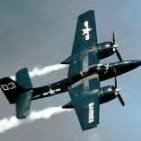
Wingnut Wings Gotha - How Much?
Rockie Yarwood and 2 others reacted to Out2gtcha for a topic
Even WITH the Pheon sheet and a set of REXx exhausts, that is utterly ridiculous. I kinda have to laugh at these people a bit.3 points -
Revell 1/32 North American P-51D-5NA Mustang
Loach Driver and 2 others reacted to KitmodellerNZ for a topic
Hi guys, I have just completed Revell's 1/32 P-51D early Mustang. This was OOB with the exception of the HGW textile harnesses. I used Tamiya acrylics and lacquers, Vallejo Metal Color, Windsor & Newton oils and AK weathering products. I really enjoyed this build, fit issues aside. I decided to use the supplied decals rather than masks for this build. The quality of the decals is fantastic. I believe they're Cartograf. I used flat and semi-gloss clear coats to represent the sheen in the areas of the hotly debated 'was it blue or was it green?' topic.3 points -
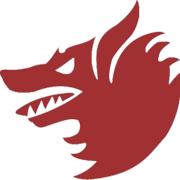
Colombia Kfir C10 Revell+Isracast
Starfighter and 2 others reacted to red Dog for a topic
I'm not sure this is convenient to do in the inside, the topside is already rounded - the problem is that since it's angled on the inside, however you round the topside, you will always see the angle and flat surface. The solution might be to round the inside but this is quite hard to achieve - it was tempted but honestly I reached the point where I'm starting to get concerned that I will break it if I pursue. Here's the kit's part in the state it is now: The angles and flat surface are still quite noticeable. I'm not equipped to vac form a new windscreen so I looked in the spare transparencies box if there was anything of help in there and sure enough I found something that may fit just fine with a bit of surgery. I confess I initially looked at the newly release mirage 2000 windscreen, but it is so much longer than this one. But this old Hasegawa F-18 blue angel could be a possible solution: I marked the area I'd need and sawed it off, then adjusted more finely by careful sanding. The parts are not cleaned or polished yet. I'll wait till i'm 100% satisfied with fitting before polishing and declaring it useable or not. notice the original part and the even more obvious angular surface Once on the KFIR, the fitting is not so bad. Some gaps are present, but nothing that cannot be addressed by framing the windscreen with aluminium tape. And finally here's a comparison picture between the original sanded part and the salvage F-18 part. Let me know what you think gents? Should I pick any of these or should I attempt a first try at vac forming my own? Thanks for your input.3 points -
RAF FG.1 XV571 WILD HARE Phantom Conversion
scvrobeson and 2 others reacted to Cees Broere for a topic
Those are very nice pics and clearly show how the fuselage slopes down sharply at the rear. Something that is not depicted in the Tamiya kit IMHO. Keep it up Anthony.3 points -
1-2 day challenge. Begin and complete Revell LS8/18 in 1 to 2 days.
scvrobeson and 2 others reacted to mpk for a topic
That's right. A student told me last Wednesday that he bought an Anime model and is half through it.3 points -

HH-60G Pavehawk Kitty Hawk 1/35 DONE!!
scvrobeson and 2 others reacted to Pete Fleischmann for a topic
thanks Tim- chipped just like the cabin floor.. used hairspray between layers of enamel paint and Tamiya acrylic.. super easy. cheers Pete3 points -
It's actually a very unreal situation, kit wise, that happened to Paul and his family, but ofcourse not unreal to what actually happened, the fire, the destruction, the loss and all that goes with it. We all may have some of his kits one way or the other, and indeed it would be a terrible shame if these explicite kits wouldn't come to reality in being build, but i realize having these kits do present a certain "treasure" in having Paul's legacy in what he was trying to give to the LSP society ....... Okay enough of these reflections, i must kick myself as well to get some of his creations to fruition......3 points
-
I'm really looking forward to trying some too! I'll try any aids to building a better model. It's not a 'cheat' unless you take a pride in purely using what comes inside the kit box, or scratch-building. Modellers once had concerns about photo-etch being cheating, and resin detail parts, and relief printed surface detail decals, and turned brass barrels - but now they've become a norm. Actually - modellers in the '50's and '60's once looked at plastic kits as cheating - and now look where we are! To me a model is about the research, the history and the subject I'm trying to portray. That journey starts in my imagination and, occasionally, results in a finished model. I'll take anything that aids that journey, but a good model is more than the sum of it's parts - it's still down to the modeller to capture the essence of something. And capture it well, or not. One aftermarket accessory does not maketh a model; the builder does IMHO. Iain (off to 'cheat' with some more of that new fangled 3D Print malarky)3 points
-
A few more from work today. I ran out of light (I REALLY need to repaint this room a lighter color) so I stopped here. And, I ran out of paint in the airbrush, so....good stopping point? Again, not going for a sharp demarcation, since none of the images I'm finding show it like that. Let me know what you think or if you have suggestions. If anyone wants to see close up shots of Woody's rivets, let me know @Archer Fine Transfers3 points
-
Thanks guys, appreciate it. Anthony, hopefully I can do justice for a RNZAF aircraft! Just more painting today. I tossed on some weird colors......not sure they show up much (wife said she couldn't see them), but I like the way the horizontal stabilizers look compared to my previous start on the wing. So far, no mask or poster putty. The paint jobs on these don't seem to have been......tidy, from the pictures I've found, so the demarcation lines are BIG. Yes, I paint in a reallllllllly random order. Works for me, so far! Let me know what you think.3 points
-

Colombia Kfir C10 Revell+Isracast
Starfighter and 2 others reacted to red Dog for a topic
Matching a pilot to a cockpit and closing the canopy for an in-flight is always a challenge. Very often the kits aren't done for closed canopies and the seat or something else is conflicting. When you add after markets and a stash pilot, you're doing it even mor difficult on yourselves I developed a method as I challenge myself with this quite often, dunno if that will help anyone but here is it anyway - At the early stage of the cockpit built, check the set height. Close the canopy and ensure the seat does not conflict with the closed canopy. if it does conflict, sand the seat base a bit. - Get rid of the belts on the seat (if any) and mill the seat cushion for the shape of the pilot back and butts - Assemble the pilot without shoes if possible, with no arms and no head. Test fit the pilot on the seat. It should be well cushioned in - Test the seat + pilot in the cockpit, ensure his legs are not too spread and conflicting with the side consoles and that the space between his leg is enough to fit the IP. Often a small cut at the legs is required for a proper fit. If shoes are an issue, get rid of them, nobody will see it under the IP most of the time - Cut the hands from the arms, - Put pins in the arm and head of the pilot and ensure you can assemble them without glue and move them until you find the perfect position - Put pins in the hand and so the same with the hands on the arms. Very often the hands should be on the controls, but hardly hands are molded with stick or throttle in them or grabbing a handle bar for WSO for instance - Mill the inside of the hands and glue flight controls there and not on the cockpit. Obviously the arm/hands should be in the correct place so the flight controls more or less match their native position. - Very often if you glue the arms before inserting the pilot in the seat, you can't go past the canopy sills. Plan ahead for that and consider gluing the pilot arms after the pilot is seated in the seat. - Pin the head (don't glue) and check that you can still close the canopy perfectly - Glue only when you're sure everything will fit and close correctly, don't forget to add belts (foil, PE, ...) attaching the pilot to the seat - once the pilot in glued to the seat, add the missing belts and seat ejection goodies. -Did I say check that closed canopy often The tree main assemblies going through separate painting and detailing The resin seat was too high to ensure a canopy close, so the bottom of the seat was sanded a bit more until the canopy closed correctly Both arms were reshaped and hands severed and repositioned after being milled for the flight controls. Invisible in the picture but right leg was bent inboard and the space between the two legs were sanded to let the IP centre pedestal slide through A pilot looking where he should according to the phase of the inflight and his hands where they are supposed to be (rather than doing the usual thumb up) is much more natural but is hardly well planned from the figurine manufacturers. I'd love to get more LSP helmets, hands with sticks or grabbing handles. in the meantime, we often have to make do with what we have in the scrap box. Now that the pilot sits in there comfortably, whish me luck because I'll start addressing that front windscreen and this is probably the critical point of this built. I need to remove the side mount as the C10 Kfir windscreen is one piece plexiglass. As you can see from the picture above, 20 years in its box already micro marked the canopy so it needs a good polish anyway.3 points -

1/32 Revell Me 262B-1/U1 Nachtjager
Paul in Napier and one other reacted to Radub for a topic
There is no known photo of a 262 night-fighter taken by the Germans before the end of the war. All known photos were taken post-war. There is a photo at the bottom of page 454 of Vol.3 of the Classic Publications series of books on the 262 taken in June 1945, with the aircraft still wearing German crosses, showing that device. If a wartime photo existed it would only prove what that particular aircraft was like. We already know that this device was not present on all aircraft at all times. Absence does not “prove a negative”. (See Lisa Simpson’s Tiger Rock.) I still believe it was a Bernhardine printer device. The two links above make a very compelling case. Please read the text in both links. The Bernhardine system consisted of more than just that terminal device hanging under the canopy, it also required some internal equipment (accounted for in original 262 drawings - there are equipment sockets inside the existing aircraft to accommodate it) and some control switches which are clearly present in the cockpit. Also read the references at the end of each of those pages. The evidence is extremely compelling. Radu2 points -

HPH FW 189 Uhu
Dany Boy and one other reacted to Phartycr0c for a topic
Entering into the foray of my first full resin kit build, I decided on the 189 as its an unusual subject very rarely modelled in any scale let alone gods own 1/32. I have to say, I really enjoyed putting this together and while I did have a few issues of my own doing, generally, if the clean up is done correctly, it goes together well with few fit issues. The problem areas i encountered were around the following areas. Where the booms attach to the underside of the wings, a gap needs to be dealt with. The glazing at the rear of the fuselage where the transition from square to round took me an age to deal with. its still not spot on but this was more likely a me issue rather than the kit itself. The section of upper fuselage was undersized and needed considerable shimming and re alignment to mate with the glazed areas. Again its not spot on but its good enough for government work as they say. First time with a HPH kit. The glazing was weird, being soft and maleable polypropelene (i Think) they gould be bent easily without cracking or other damage. There are other mistakes I have made but for anyone who is thinking of building this kit, do it, just ensure you take your time and dry fit multiple times before committing to glue. Anyhow, on with the show. Based VERY VERY loosely on this colour scheme, Here we go.2 points -
quite amazing - it's like watching a magician Ben even if the parts don't work out, the learning will apply for next time and the boundless realisation of your imagination it is so cool to see this kind of thing Peter2 points
-
Hi Anthony, Like you, I also have been looking at some images. The fin inlet does appear to be bulged on many FGR.2 aircraft, but it does appear that the FG.1 is not, so I agree with you. Interesting discussion in the link below: http://tailspintopics.blogspot.com/2016/01/f4hf-4-phantom-ram-air-inlet-mysteries.html Some more FG.1 images: Derek2 points
-

DH 82A Tiger Moth S Rhodesia 1943
Troy Molitor and one other reacted to mozart for a topic
So everything's pretty much ready for the top wing to go on, then rigging. The only thing I'm not happy about are the wind shields, they are rather thick and at present don't seem to fit too well: I'm thinking of trying to cut some frames from 10 thou plastic using the Silhouette cutter and put some clear plastic behind them. Worth a try I reckon. And a warning to future builders, the wing/fuselage join, even though supported by extra rods, is worryingly fragile. Due to the angle of the wing there is not a lot of surface area to put glue onto, so every time I handle the model and put it down, I'm conscious of this. I'm hoping and expecting that the top wing and rigging will strengthen it all.2 points -

1/32 Revell Me 262B-1/U1 Nachtjager
Paul in Napier and one other reacted to Thunnus for a topic
Thanks guys! I appreciate you looking in! The big test will be how the decal settles onto the uneven surface of the instrument panel. It could become a distorted blob so let's see! I've given the IP a coat of RLM 66 (Mr Hobby Aqueous) and a layer of clear gloss to help protect it from the decal solvent(s) I'll be throwing at it. In order to help align the decals into the correct orientation, I've decided to sub-divide the instrument panel decal into smaller parts. I've built up an assortment of decal solvents including Micro Sol, Tamiya Mark Fit, Mr Mark Softer and Walters Solvaset. Of these, I've found that Solvaset is the best at bullying tough decals to conform so that is what I'm going to use for this trial. Without any solvent, the decal simply sits like a board on top of the instrument bezels. Using a fine brush, I liberally moisten the decal with Solvaset. Coaxing the fluid under the decal via the edges seems to help get the decal to conform. It takes multiple applications of Solvaset and also some physical depression using a cotton swab to get the decals to look presentable. Eventually, all of the decals are set into place. There were a few buttons and switch handles that I chose to paint by hand. A sharp knife is used cut the clear decal film in between the rows of instruments and a few stubborn areas. A final round of Solvaset and cotton swab pressing gets the decal layer as flat as it is going to get. Now a quick flat coat to even everything out... Not perfect. It's tough getting the decals perfectly centered on each dial but I think this is acceptable. And I think it looks better than the photoetch. I can further enhance the panel by adding clear gloss or maybe UV epoxy into each of the dial faces. It's cool to know that kit-supplied treatment of instrument panel can compare so favorably to an aftermarket product. Hats off to Revell!2 points -
Revell/ AIMS Mistel S3C Wk Nr 460066 Bernburg 1945
Uncarina and one other reacted to monthebiff for a topic
Some more work done on the G-10 getting the resin parts an initial filling and sanding back session followed by finally getting the floor fitted at last Pretty happy so far with progress and how this is starting to come together now. Regards. Andy2 points -
Revell/ AIMS Mistel S3C Wk Nr 460066 Bernburg 1945
chukw and one other reacted to monthebiff for a topic
Radio rack also completed also completed today. And then fitted to the rear bulkhead Feel like I'm cheating bit with these Eduard pre printed items as I dont usually go for them, however they are pretty good and once a.flat coat has been applied everything should come together nicely. Regards. Andy2 points -
Revell/ AIMS Mistel S3C Wk Nr 460066 Bernburg 1945
chukw and one other reacted to monthebiff for a topic
A little more progress on the cockpit area this weekend, the AIMS armoured pilot seat was fitted to the modified Revell frame and then carefully removed a very poorly moulded map case from the Bordfunkerk's seat and replaced with the etched part supplied in the Eduard set as well as removing the moulded on bomb aimer's cusion as this is not fitted on the late G marks. Although not a lot of pictures are available of the G series 88's cockpit details one thing I wanted to do was move the emergency fuel pump from the starboard side wall and then add to the rear bulkhead and also scratch the valves, all plumbing was added with Albion micro tube. Next up I'm working on adding the FuG 220 rack in the foward fuselage, I have no idea if it would have been in there as no pictures are available for the G-10 but as these airframes were built and then moved to the Mistel project at last minute as well as Wk No 460066 having a modified shortened rudder to make way for the airiel mast I'm going to go the what if route and fit the cockpit with the full array of equipment. Regards. Andy2 points -
Revell/ AIMS Mistel S3C Wk Nr 460066 Bernburg 1945
chukw and one other reacted to monthebiff for a topic
So after chopping the fuselage in half in excitment of joining the this group build I realised I probably should have glued the buklheads/ wing spars in place first to ease initial alignment before getting the razor saw out but never mind. So with that in mind I will work on the rear fuselage foward. The tail wheel bay on the Ju-88 is pretty large open space and needs some detail. On mu Ju-188 build I used the Profi Modeller set which although very nice is very very expensive now. On this build I'm going to use the AIMS etched set which is a nice simple set and is a massive improvement to the very basic kit parts. Hopefuuly I can follow the Profi set a bit and make some improvements based on that set. So with a bit of care I opened up necesary holes and then added the etched skins. Not had a lot of time to concentrate on this one but with all my refernce sorted now I'm looking foward to getting on with this one now. Regards. Andy2 points -
Revell/ AIMS Mistel S3C Wk Nr 460066 Bernburg 1945
chukw and one other reacted to monthebiff for a topic
While looking though Roger S Gaemperle's excellent Captured Eagle's Vol 1 I came across these shots of G-10 Mistels, this is 460066 which I am building. Particularly like the last shot if you can call it a complete Mistel with the Fw 190 just dumped on top of the 88. Regards.Andy2 points

